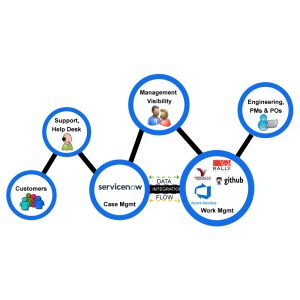In today’s multi-cloud and hybrid IT landscape, the challenge isn’t just about managing data storage or compute resources. It’s about ensuring that data can move quickly and securely across a distributed environment. Whether you’re migrating workloads, synchronizing data lakes, or managing real-time content delivery, file transfer speed is a crucial performance metric. Especially in sectors where data volumes are massive and latency is non-negotiable, a slow or inconsistent pipeline can introduce friction across the entire digital value chain.
For hybrid cloud environments, data transfers are frequent and bi-directional. Files might originate from edge locations or legacy systems and need to reach cloud-native applications for further processing. In such contexts, delays in data movement mean delays in insights, decisions, and service delivery.
The Data Bottleneck in Hybrid Environments
Hybrid cloud architectures are inherently decentralized. They rely on a combination of private infrastructure, public cloud platforms, and edge computing resources. This decentralization, while beneficial in terms of flexibility and cost-efficiency, introduces new challenges in network performance, particularly during high-volume data movement.
Traditional file transfer methods like FTP, HTTP, and even SFTP are inadequate in this context. They’re built on the TCP protocol, which wasn’t designed for high-speed or long-distance data transfer. TCP’s congestion control algorithms, packet retransmission mechanisms, and latency sensitivity all become roadblocks when transferring multi-gigabyte or terabyte-scale files over global networks.
The impact of this bottleneck is often underestimated. It shows up as missed processing windows, failed analytics pipelines, version control issues in collaborative environments, or simply frustrated engineering teams waiting on data to arrive.
Introducing IBM Aspera’s FASP Technology
IBM Aspera addresses this bottleneck through its proprietary FASP (Fast Adaptive Secure Protocol). Instead of attempting to optimize TCP or tune existing transfer mechanisms, FASP takes a clean-sheet approach. It’s built on the principles of maximizing bandwidth usage, reducing latency sensitivity, and ensuring end-to-end security.
FASP uses UDP as its transport layer, allowing it to avoid TCP’s slow start, congestion avoidance, and retransmission behavior. Instead, it relies on a rate-based, adaptive algorithm that adjusts the transfer speed based on real-time network performance and system conditions.
Technical Advantages of FASP:
- Maximum Bandwidth Utilization: FASP ensures full use of available bandwidth regardless of file size or transfer distance.
- Loss Resilience: Packet loss doesn’t trigger a drop in throughput, as it does in TCP. Instead, FASP compensates dynamically.
- Built-in Security: FASP uses AES-128/256 encryption for data in motion and integrates with SSH for secure authentication.
- Transfer Integrity: FASP includes cryptographic hashing to verify file integrity upon arrival.
Pipeline Design: Aligning Aspera with Your Architecture
When planning a hybrid data pipeline with IBM Aspera, the first step is understanding your data flow. Where is data being generated? Where does it need to go? How frequently does it move, and what dependencies exist between datasets?
1. Source and Destination Mapping
Start by mapping out endpoints. Typical combinations include:
- Edge devices or sensors to cloud storage (for real-time data ingestion)
- On-premises data centers to public cloud analytics environments
- Cloud-to-cloud transfers between AWS, Azure, and GCP
Aspera supports object storage endpoints across major platforms, as well as traditional file systems, enabling seamless integration regardless of where your workloads reside.
2. Transfer Nodes, Agents, and Clustered Deployments
Deploy Aspera transfer nodes close to both your source and destination systems. In high-volume environments, consider clustered Aspera transfer servers to distribute the load. These servers handle the actual file transfers and are responsible for executing FASP sessions.
Agents can be lightweight clients installed on edge devices or within CI/CD environments to automate outbound transfers.
3. Workflow Orchestration and Automation
IBM Aspera integrates with popular orchestration tools to build automated pipelines. You can:
- Use REST APIs to trigger transfers programmatically
- Embed transfer logic within ETL jobs or data processing pipelines
- Schedule recurring transfers using Aspera Console or third-party tools
Advanced users may also use Aspera Orchestrator, a web-based workflow engine, to design multi-step processes that include file validation, transformation, and transfer in one flow.
4. Centralized Monitoring and Visibility
Visibility is essential in hybrid environments. Aspera Console provides real-time dashboards, audit trails, and failure notifications to help you track transfer progress, detect anomalies, and analyze throughput trends. This makes it easier to enforce SLAs and improve operational transparency.
Optimizing for Performance in Hybrid Cloud
To extract full value from Aspera, performance optimization should be approached at multiple levels.
Network and Infrastructure Optimization
- Ensure UDP is enabled and prioritized within network firewalls and routing configurations.
- Use dedicated network paths or VPNs for sensitive or high-priority transfers.
- Allocate compute and I/O resources for transfer nodes to avoid performance bottlenecks.
Intelligent Transfer Policies
Use Aspera’s policy management tools to:
- Throttle transfer speeds based on time-of-day or user roles
- Prioritize jobs by criticality
- Create failover and fallback conditions to redirect failed transfers to secondary endpoints
Parallelism and Concurrency
Split large datasets into smaller chunks and transfer them in parallel using Aspera’s multi-session capabilities. This reduces total transfer time and improves resilience in case of partial network failure.
Resilience and Recovery
All Aspera transfers support automatic restart and resume. In hybrid architectures, where network partitions or service outages are more common, this feature ensures that your data pipelines remain robust and self-healing.
Security and Compliance
IBM Aspera incorporates security at every layer of its protocol. Hybrid cloud environments often operate under compliance regimes such as:
- GDPR (Europe)
- HIPAA (US healthcare)
- FINRA/SOX (financial services)
Aspera simplifies compliance with:
- In-transit encryption using AES-256
- User and group-level access control
- Tamper-proof audit logs
- Policy-based restrictions on transfer content and destinations
This ensures that even when data moves across jurisdictional boundaries or third-party cloud infrastructure, security and auditability are not compromised.
Managing Scalability
As data volumes grow, your pipeline must scale without compromising speed or reliability. Aspera supports:
- Auto-scaling deployments in Kubernetes or containerized environments
- Horizontal scaling by adding additional transfer servers
- Dynamic bandwidth allocation per user, team, or job
- Multi-cloud federation for data distribution across cloud platforms
Organizations can configure Aspera to elastically grow in response to spikes in demand, such as large marketing campaigns, batch processing windows, or end-of-month reporting cycles.
Integrating with DataOps and DevOps Pipelines
Modern hybrid cloud architectures are increasingly automated. Aspera fits seamlessly into CI/CD and DataOps pipelines:
- Integrate into Jenkins or GitHub Actions for automated deployment workflows
- Use Aspera CLI in Docker containers to enable ephemeral transfer tasks
- Trigger transfers from data ingestion frameworks like Apache NiFi
- Pipe transferred files directly into Apache Spark or Flink for processing
This level of integration allows teams to treat file transfer as a programmable, testable, and monitorable part of their application architecture.
Key Takeaways
- IBM Aspera delivers superior data transfer performance through its FASP protocol, bypassing the limitations of TCP.
- It enables hybrid cloud architectures to move data securely, efficiently, and predictably, even over high-latency or lossy networks.
- Its enterprise-grade features—encryption, integrity, retry logic, bandwidth control, and audit logging—make it suitable for mission-critical applications.
- Aspera supports integration with DevOps, DataOps, and orchestration tools, helping organizations build end-to-end automated workflows.
- Scalability is inherent to the platform, allowing organizations to grow their data pipelines in step with their business needs.
Conclusion: Why Nexright is the Right Partner for Aspera Integration
Designing high-speed transfer pipelines with IBM Aspera requires more than deploying software. It takes a deep understanding of hybrid cloud architecture, secure data movement, and workflow orchestration.
At Nexright, we specialize in implementing high-performance data transfer infrastructures that are purpose-built for today’s complex environments. Our expertise spans cloud-native development, infrastructure design, integration engineering, and enterprise-scale deployment. We work with you to:
- Identify and assess your data transfer needs
- Architect a pipeline aligned with your operational priorities
- Deploy and configure IBM Aspera for performance and compliance
- Integrate with your existing cloud, data, and security framework
- Monitor and optimize pipeline performance over time
Our goal is to ensure that your hybrid cloud operations are not constrained by data movement challenges. Whether you need to streamline media delivery, accelerate scientific research, or enable global collaboration, Nexright provides the tools and expertise to make it possible.
Let’s talk about how we can transform your hybrid data transfer strategy with IBM Aspera and Nexright at the helm.



